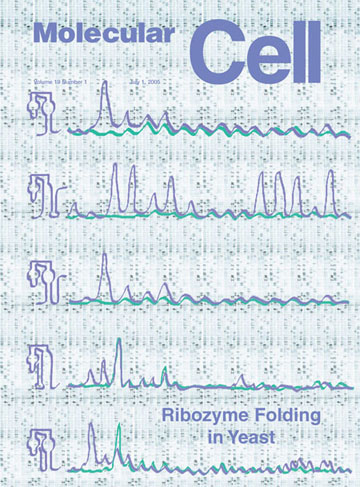
Cover image is a digital design by Mia Champion, courtesy of Cell Press.
|
Hairpin ribozyme self-cleavage was used to monitor partitioning between alternative secondary structures during transcription in vitro and in yeast. During transcription in vitro, upstream stem loops inhibited ribozyme activity more than downstream stem loops, consistent with a sequential folding mechanism dominated by transcriptional polarity. In contrast, stable stem loops that assemble from sequences downstream of the ribozyme inhibited self-cleavage as much as upstream stem loops did in yeast. The cover image shows patterns of RNA accessibility to chemical modification, which confirmed that changes in self-cleavage activity reflect partitioning between functional ribozyme structures and inhibitory stem loops. For further details, see the article by Mahen et al. in the July 1, 2005 issue of Molecular Cell (p.?27-37). See http://dx.doi.org/10.1016/j.molcel.2005.05.025
Cover image is a digital design by Mia Champion, courtesy of Cell Press. |